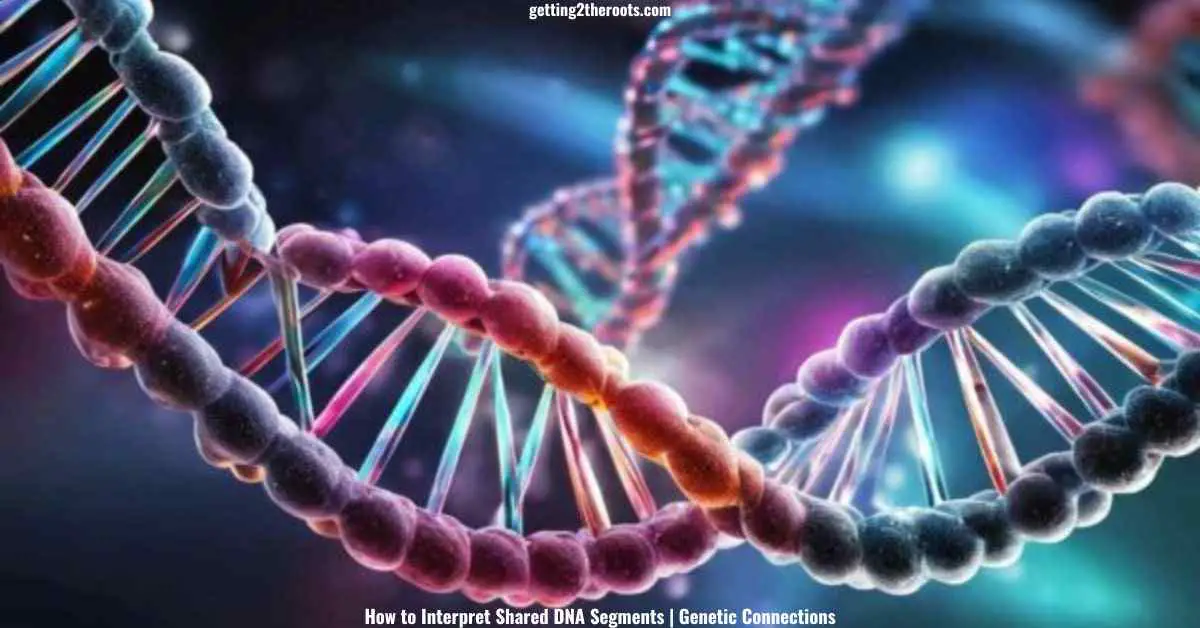Exploring shared DNA segments reveals an intriguing world within us, woven with strands of DNA that carry the codes of life as we know it.
As we delve deeper into these strands, we unearth surprising details about ourselves, our ancestors, our health risks, and our genetic connections to the world around us.
With advancements in DNA analysis, especially in interpreting these segments, we can now derive profound insights from our genetic makeup, leading to a better understanding of our biology and the ability to trace lineages.
This article aims to unpack the complexities of shared DNA segment data analysis, starting with a comprehensive understanding of DNA segments.
Then we will delve into the mechanism of DNA segmentation, unfolding methodologies and challenges in the analysis, and finally exploring the broad applications of these genetic insights.
Along with the article on shared DNA segments, here are two additional recommended articles that readers might find fascinating and informative:
“Deciphering the Codes: How to Read DNA Test Results”: This article is perfect for those who have undergone DNA testing and are looking to make sense of their results.
It provides a comprehensive guide on how to interpret the complex information presented in DNA test reports, helping readers understand the nuances of their genetic makeup.
“Explore Genetic Triangulation: The New Human Connection Map”: For readers interested in the cutting-edge applications of DNA analysis in understanding human connections, this article delves into the concept of genetic triangulation.
It explores how this method is revolutionizing our approach to mapping human relationships and ancestry, offering a unique perspective on how we are all interconnected.
Both articles complement the insights gained from understanding shared DNA segments and provide a deeper dive into the fascinating world of genetic analysis and its implications for personal and ancestral understanding.

Understanding DNA Segments
DNA Segments: The Blueprint of Life and Their Significance in Genetics
In the realm of genetics, the building block of life as we know it, DNA, or Deoxyribonucleic acid, is a multi-faceted entity containing segments with unique significance.
Understanding these segments and their roles not only provides profound insight into the genetic makeup of any life form but also lays the groundwork for conducting advanced genetic research.
The Composition and Structure of DNA Segments
A DNA molecule is comprised of a sequence of small building blocks known as nucleotides, including adenine, guanine, cytosine, and thymine.
These nucleotides, arranged into sequences of varying lengths, form what are commonly referred to as DNA segments.
DNA segments range in size from a few nucleotides to millions. On a broader scale, these are encapsulated within larger structures called chromosomes, of which the human body has 23 pairs.
Role of DNA Segments in Interpreting Shared DNA
Individual DNA segments serve as templates for creating different types of RNA that, in turn, guide the creation of proteins, the functional products of genes.
Hence, DNA segments or sequences are often correlated with genes, each containing the instructions or codes necessary for the biological development and functioning of an organism.
Non-Coding DNA in the Process of Interpreting Shared DNA Segments
However, not all DNA sequences correlate with genes. Much of the DNA, ironically dubbed ‘junk DNA’, appears to be non-coding, implying it doesn’t serve the traditional role of encoding proteins.
However, recent research has indicated potential significance for these non-coding segments, suggesting roles in gene regulation and the stability of the genome.
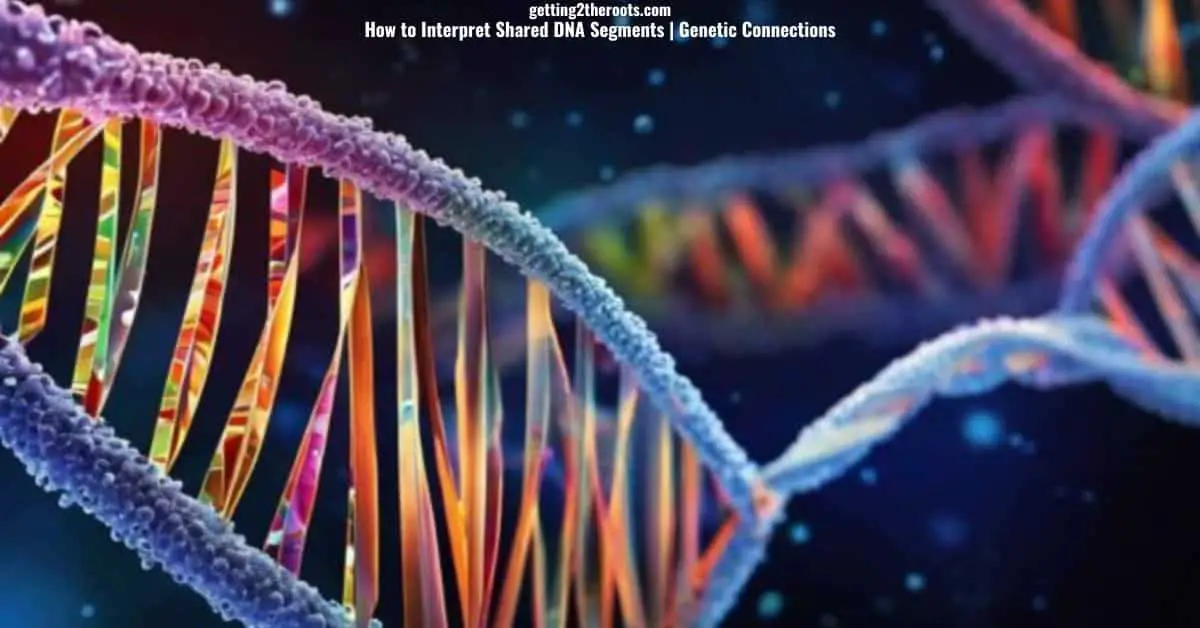
DNA Segments in Genetic Research: Interpreting Shared DNA Segments
One of the profound utilities of identifying DNA segments relates to advancements in genetic research, particularly in identifying and treating genetic disorders.
Each DNA segment offers a peek into the potential occurrence of genetic disorders, allowing scientists to study these segments, potentially leading to predictive diagnoses and personalized treatment strategies.
Case Studies in Interpreting Shared DNA Segments: BRCA Genes
Consider the celebrated case of the BRCA1 and BRCA2 genes, DNA segments whose mutations have been linked with an increased risk of breast and ovarian cancer.
Identification of mutations in these genes allows individuals to elect preventive measures, reducing their risk significantly.
On a broader scale, understanding how these DNA segments react and change over time has provided invaluable insight into the evolution of species, thus helping to answer fundamental biological questions.
Genetic Engineering and Interpreting Shared DNA Segments
Cracking the code of DNA segments also has significant implications for the rapidly developing field of genetic engineering.
From gene editing techniques like CRISPR-Cas9 to genetically modified organisms (GMOs) in agriculture to potential cures for currently untreatable diseases,
Conclusion: The Enduring Significance of DNA Segments in Genetics
Therefore, understanding DNA segments and their functions equates to unlocking the mystery of genetic codes.
It provides the key to comprehending the complex phenomena of life, evolution, and death, reinforcing the tenet that the core of biological knowledge lies within these minuscule building blocks of life, etched in the molecules of our DNA.
In essence, DNA segments stand as silent affirmations of life’s continuity, evolution, and diversity.
Their significance within genetics cannot be understated; they encapsulate the codes of life, embed potential answers to genetic disorders, and hold the potential for enormous strides in advancing human life far beyond current realms.
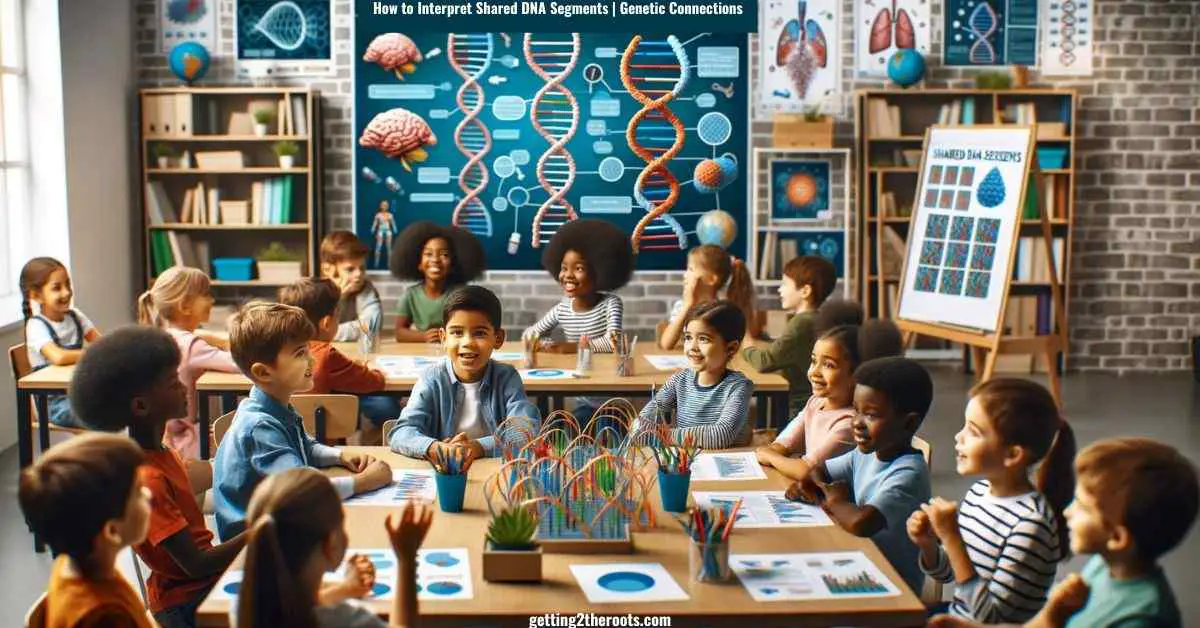
Process and Importance of DNA Segmentation
DNA segmentation and its intricacies reveal a captivating picture of the genetic phenomenon that is integral to our understanding of life’s coding system. The term ‘DNA segmentation’ refers to the division of DNA into identifiable segments or blocks.
For scientists studying genetics, the ability to identify these segments constitutes a vital tool that facilitates our comprehension of the genetic mechanisms that underlie all known forms of life.
Genetic Recombination and Mutation in Interpreting Shared DNA Segments
DNA segmentation arises from processes including recombination and mutation. Recombination, a genetic poker game where sequences of parental DNA are shuffled into new combinations in their offspring, generates borders defining the beginning and end of DNA segments.
On the other hand, mutation, an inherent biochemical fluke, can modify individual letters within the DNA sequences, which in turn influences the allocation of specific DNA segments.
Landmarks in Genetic Studies: Interpreting Shared DNA Segments
Moving towards the heart of genetic studies, DNA segments serve as landmarks, illuminating the path to our genomic landscape.
The study of these gene-rich blocks translates into comprehending genetic variation, disease susceptibility, and individual responses to drugs.
Further, an understanding of DNA segments entails an appreciation for the deep significance of genetic variation on an unprecedented scale.
DNA Segmentation in GWAS and Interpreting Shared DNA Segments
DNA segments and genetic studies further intertwine when considering the realm of Genome-Wide Association Studies (GWAS). Herein lies the intersection of statistical genetics with human health and disease.
Through the exploitation of identified DNA segments scattered throughout the genome, innocuous variations correlating with disease risk can be pinpointed, such as single-nucleotide polymorphisms (SNPs) for instance.
Whole-Genome Sequencing and DNA Segmentation in Interpreting Shared DNA Segments
In addition, with the recent advent of whole-genome sequencing, genotype imputation—the statistical inference of unobserved genotypes—gains more power.
By harnessing patterns of DNA segmentation through knowledge of haplotype blocks and recombination hotspots, it is now possible to accurately guess unseen genetic information.
This electorate predicts far-reaching implications for personalized medicine and pharmacogenomics.
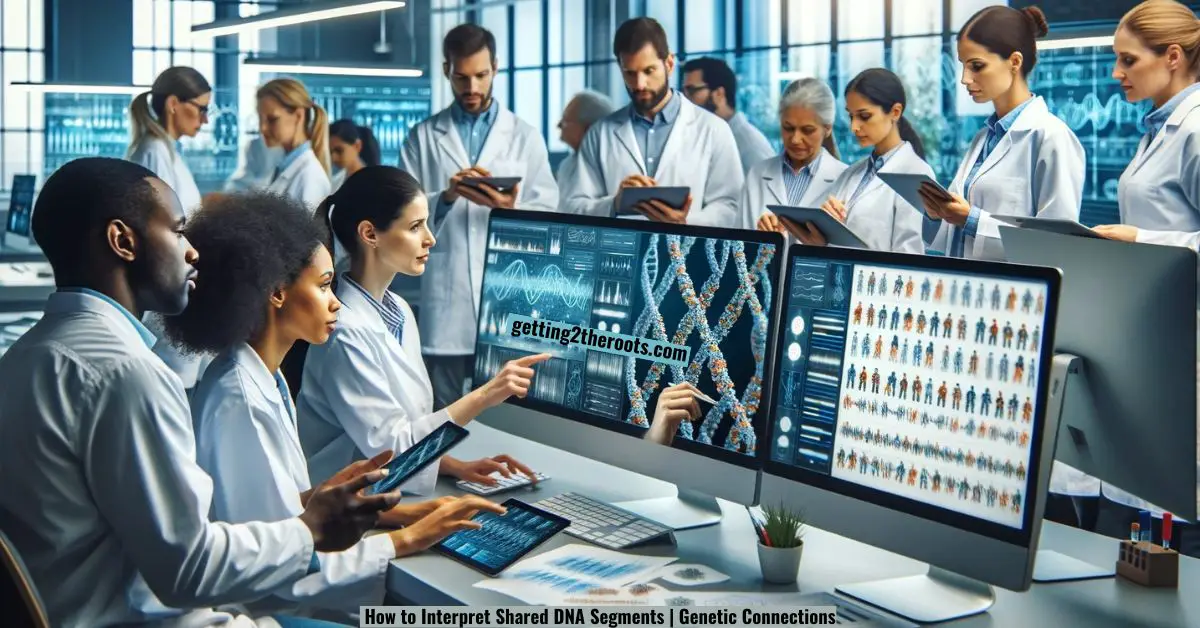
Case Studies in DNA Segmentation: Interpreting Shared DNA Segments
One recent breakthrough illustrates this impactful connection. Researchers have uncovered a segregation distortion within mouse Y chromosomes, resulting in an unexpectedly high proportion of sons.
This discovery underscores the fundamental links between DNA segmentation, species’ sex ratios, fertility, and the principles of Darwinian evolution.
It illustrates how knowledge gleaned from DNA segments cascades into observations in the natural world.
Genetic Engineering and DNA Segmentation: Interpreting Shared DNA Segments
Furthermore, DNA segmentation proves invaluable for genetic engineering goals, as in the case of synthetic biology.
Utilizing DNA segments as interchangeable parts, scientists create novel biological functions and systems.
In the instance of genetically modified organisms (GTOs), specified genes are cut from one organism’s DNA and inserted into another, creating DNA sequences that would be unlikely to occur naturally.
Historical Insights from DNA Segments in Interpreting Shared DNA Segments
Emerging from these studies, DNA segments also serve as postcards from our species’ history, carrying insights into human migration patterns and ancestral lineages.
Our understanding of migrations and the peopling of various regions around the world owes much to the study of these segments.
Concluding Insights on DNA Segmentation in Interpreting Shared DNA Segments
In conclusion, the segmentation of DNA offers insights into the very fabric of life. Understanding this intricate process continues to enlighten our comprehension of genetic diseases.
This evolution in the human genome’s complexities leads us toward innovative strides in medicine, agriculture, and diverse biology-related fields.
Akin to a puzzle, life waits to be deciphered one DNA segment at a time – the continuous deciphering of this genetic marvel helps us understand the mysteries of life itself.
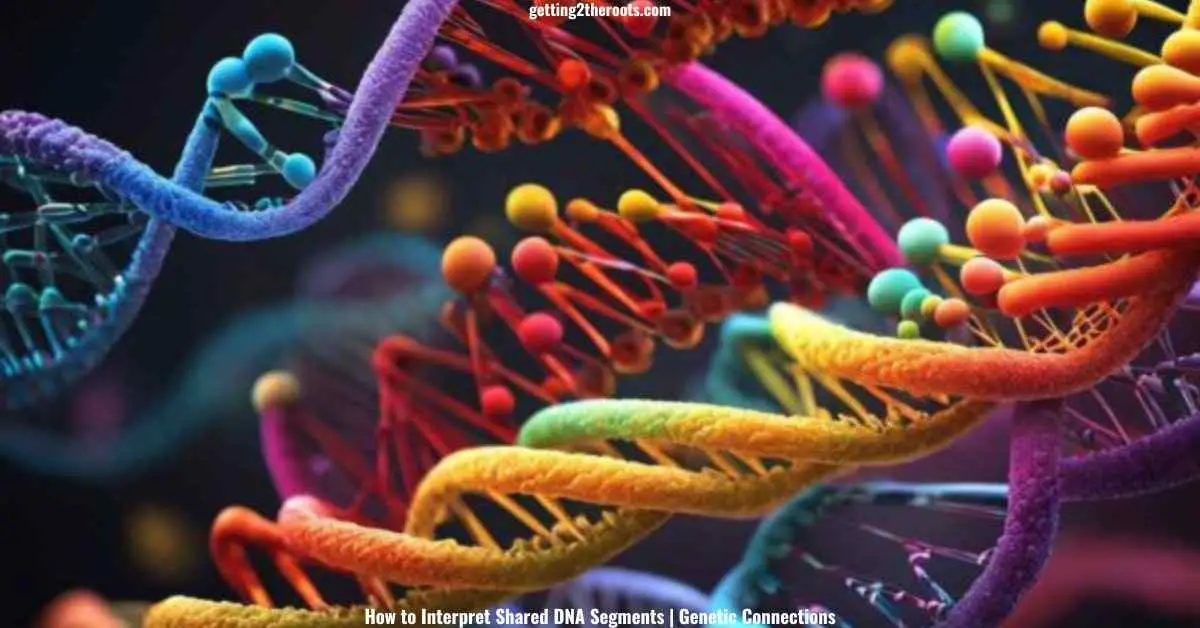
Shared DNA Segment Data Analysis
Shifting the focus towards shared DNA segment data analysis, it’s essential to acknowledge that this is an innovation at the forefront of genetic research and holds considerable potential for unveiling numerous layers of our genetic heritage.
Shared DNA segments denote contiguous stretches of identical DNA passed down from common ancestors.
The study of such overlapping genetic material provides vital insights into relatedness among individuals, calculating degrees of kinship, inferring population history, and identifying genetic disease patterns.
Pairwise Comparison in Shared DNA Segment Analysis
A central component of shared DNA segment data analysis is the utilization of pairwise comparison. It’s a technique involving the comparison of the DNA of two individuals, searching for stretches of matching DNA exceeding certain lengths.
This concept leans on the principle that closely related individuals possess longer shared segments than distantly related or unrelated ones.
It relies on sophisticated statistical tools and biotechnology platforms to perform these comparisons for thousands to millions of genetic markers.
Methodology of Shared DNA Segment Data Analysis
Let us explore the methodology behind this profound genetic science. The process begins with individual genotyping, where the DNA of a person is isolated and subjected to a genomic scan.
This scan surveys several hundred thousand single nucleotide polymorphisms (SNPs), unique genetic markers spread across the entirety of the genome.
Identifying Shared DNA Segments Through Linkage Disequilibrium
Following genotyping, a computational methodology known as ‘linkage disequilibrium’ is applied to identify genetic segments that are unlikely to be reshuffled or separated during meiosis.
These regions represent the shared DNA segments that are inherited intact over generations and serve as the key focus of data analysis.

Advanced Tools for Analyzing Shared DNA Segments
To further streamline the analysis process, sophisticated algorithms are often employed. Tools like GERMLINE, BEAGLE, and PLINK have been specifically designed to locate shared genetic material across extensive databases of genotyped individuals.
These robust tools can generate data offering unique insights into common lineage, population dynamics, and shared genetic predispositions.
Shared DNA Segments in Ancestry and Genealogical Research
Moreover, shared DNA segment data analysis plays a pivotal role in unraveling genetic mysteries in the fields of ancestry and genealogical research.
The statistical principles behind this methodology help researchers construct exhaustive family trees and reveal peculiar genetic ties between geographical location and hereditary attributes.
This precise application of DNA segment analysis contributes to a hitherto unachieved understanding of human population genetics.
Medical Genetics and Shared DNA Segment Data Analysis
In the larger scheme of things, shared DNA segment data analysis is a pivotal tool in medical genetics. It holds immense potential in identifying genetic risk factors for common diseases, thus playing a central role in predictive medicine.
Its role in studying genetic epidemiology and personalized pharmacogenomics cannot be overstated, as it continues to accelerate our progress toward a future of tailored healthcare.
Conclusion: The Impact of Shared DNA Segment Data Analysis
In concluding this discourse, one must acknowledge that shared DNA segment data analysis presents a novel way to navigate the labyrinth of human genetics.
This emerging field illuminates a path to counter genetic diseases, understand human historiography, and paint a vibrant picture of our shared ancestry.
The exploration of shared DNA segments unearths a universe of possibilities, promising imminent breakthroughs in medicine, genetics, and ecology.
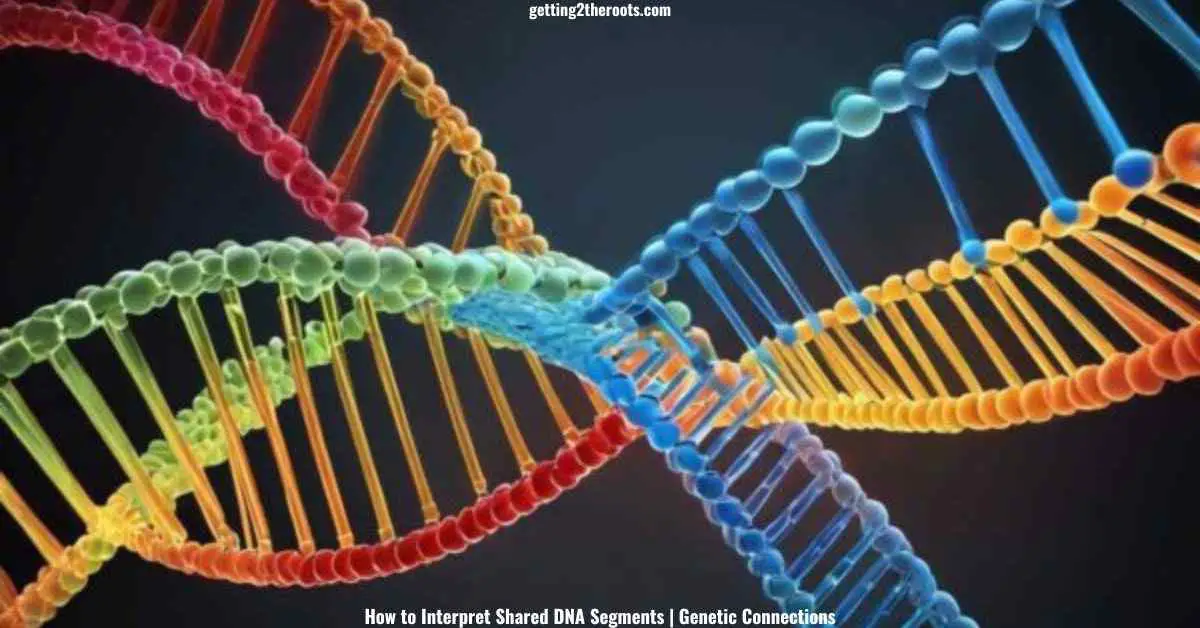
The Application and Significance of Shared DNA Segment Data Analysis
To begin with, shared DNA segment data analysis represents a significant leap in genetic research, incorporating innovative methodologies and algorithms to elucidate our understanding of genes and their related disease susceptibilities.
Indeed, interpreting shared DNA segments – sections of DNA that are identical due to inheritance from a common ancestor – forms the backbone of many genetic studies and applications.
The Process of Shared DNA Segment Data Analysis
To put it simply, shared DNA segment data analysis involves pairwise comparison, a computational process that compares each pair of DNA in a given dataset.
Individual genotyping and genomic scans are indispensable in generating the data necessary for comparison, capturing considerable amounts of genomic information from multiple individuals.
A highly detailed map of the genome can be created, providing comprehensive insights into genetic variations and DNA segment alignment.
Linkage Disequilibrium in Shared DNA Segment Analysis
Integral to this process is the concept of linkage disequilibrium – a scenario where particular combinations of alleles or genetic markers located near one another on the chromosome occur together more frequently than would be expected by chance alone.
The identification of shared DNA segments by linkage disequilibrium has proven invaluable in mapping disease genes, providing an effective method for localizing rare disease-causing mutations.
Computational Tools in Shared DNA Segment Analysis
With the advent of powerful computational tools and advanced mathematical algorithms, the analysis of shared DNA segment data has become markedly more accurate and efficient.
These tools identify shared segments and provide estimations on their length and occurrence, thereby supporting extensive genome-wide studies and offering insights into population genetics.
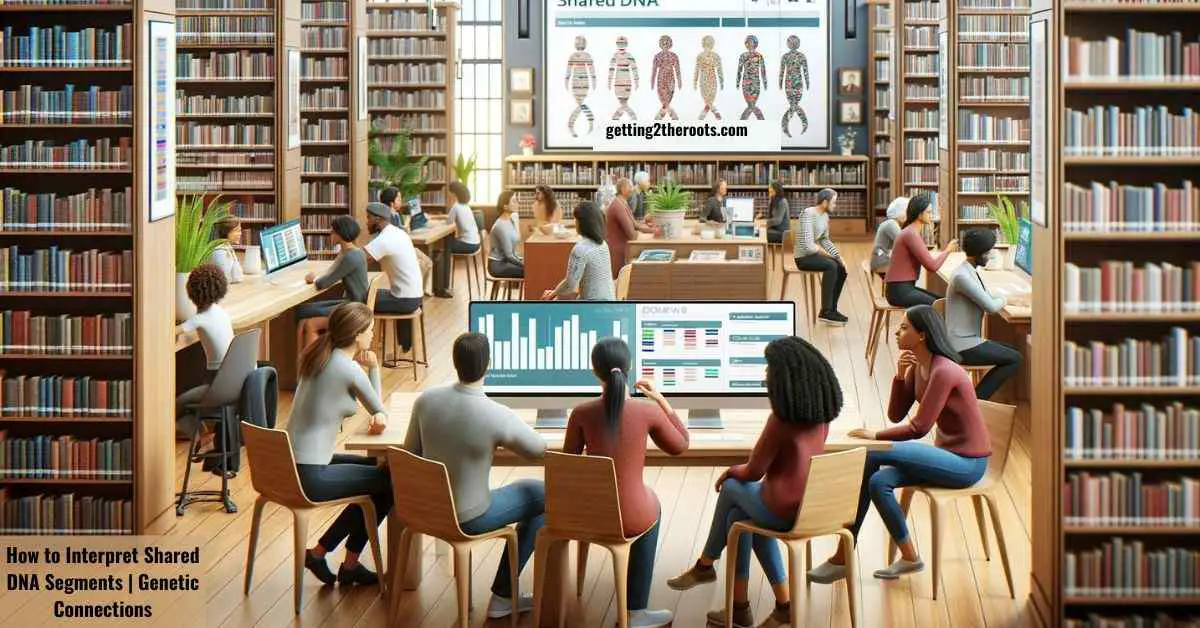
Ancestry Research Through Shared DNA Segments
One of the prominent areas in which shared DNA segment analysis shines is ancestry and genealogical research.
By studying shared DNA segments across diverse populations, scientists can map out historical human migration patterns, decipher ancestral relationships, and gain deep insights into our shared global history.
Medical Genetics and Shared DNA Segments
In medical genetics, shared DNA segment data analysis holds immense potential. By uncovering which genetic segments are shared among individuals with the same ailment.
Hence, scientists can identify specific genetic variations – or even certain genes – that contribute to disease susceptibility.
This paves the way for improved diagnostic methods, targeted treatments, and interventions, fortifying the field of personalized medicine.
Identifying Genetic Risk Factors Using Shared DNA Segments
Moreover, shared DNA segment analysis becomes highly advantageous in identifying genetic risk factors.
Individuals who inherit the same DNA segment from a common ancestor have an increased risk of developing equivalent genetic disorders.
Identifying these shared segments can help preemptively pinpoint at-risk individuals, aiding in early intervention and potentially decreasing disease incidence.
Conclusion: The Transformative Impact of Shared DNA Segment Data Analysis
In conclusion, shared DNA segment data analysis is an exciting frontier in genomics, transforming the way we understand and intervene in human health and disease.
As we continue to explore its vast potential, it undoubtedly serves as a powerful tool augmenting our scientific curiosity and urge for discovery.
As a whole, the field of shared DNA segment data analysis opens up unexplored frontiers in genetic studies, transfiguring our approach in fields ranging from medical genetics to ancestry research.
Not only does it aid in decoding the mysteries stored within us, but it also paves the way for breakthroughs in disease diagnosis, treatment, and prevention.
Therefore, it’s essential to recognize the value of this potentially transformative research area.
Our understanding of our genetic data has a significant impact on how we understand life, health, and ancestry, illuminating the way for numerous discoveries and innovations in the vast field of genetics.
Conclusion
In conclusion, the exploration of shared DNA segments opens new vistas in understanding our genetic heritage and health.
It’s not just about tracing ancestry or identifying genetic risk factors; it’s a journey into the heart of what makes us unique yet connected.
Through the meticulous analysis of these segments, we unlock the stories encoded in our DNA, bridging the past with the present and paving the way for medical breakthroughs.
As we continue to unravel the complex tapestry of our genetic makeup, we grow closer to mastering the art of personalized medicine and deeper ancestry comprehension.
Exploring Shared DNA Segments: Frequently Asked Questions
- What are Shared DNA Segments and How Do They Affect Genetic Research? “Shared DNA segments refer to identical stretches of DNA inherited from common ancestors. Their study is crucial in genetic research, helping to understand genetic relationships and trace ancestry.”
- How Can Interpreting Shared DNA Segments Help in Ancestry Research? “Interpreting shared DNA segments plays a vital role in ancestry research. It allows individuals to discover their genetic heritage and trace lineage, revealing connections to distant relatives and ancestral origins.”
- Can Shared DNA Segments Provide Insights into Medical Conditions? “Yes, shared DNA segments can provide significant insights into medical conditions. By studying these segments, researchers can identify genetic predispositions to certain diseases, aiding in the development of personalized medicine.”
- What is the Role of Shared DNA Segments in Personalized Medicine? “In personalized medicine, shared DNA segments are analyzed to tailor medical treatments based on an individual’s genetic makeup. This approach leads to more effective and targeted therapies.”
- How Accurate Are Predictions Based on Shared DNA Segments in Genealogy? “Predictions based on shared DNA segments in genealogy are generally accurate but can vary. The accuracy depends on the size of the shared segment and the quality of the DNA database used in the analysis.

